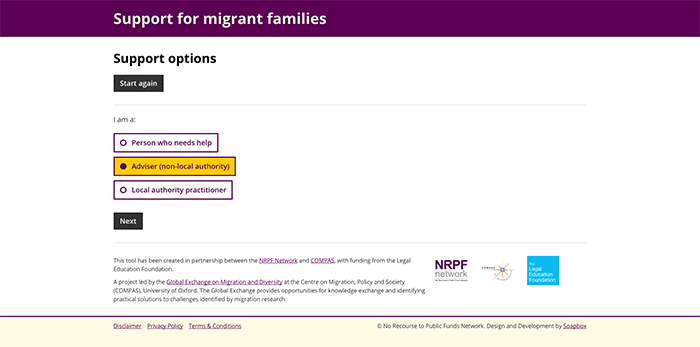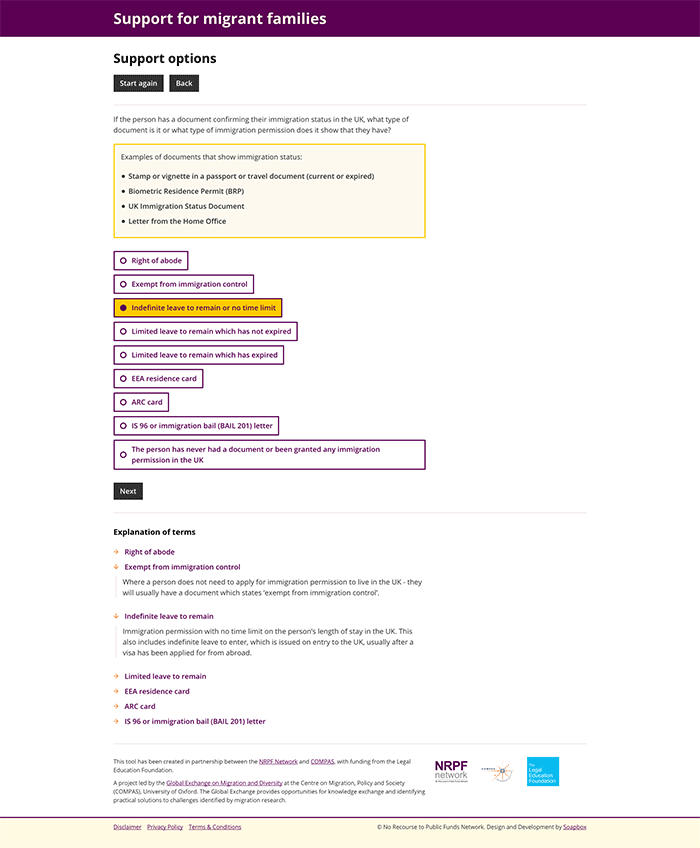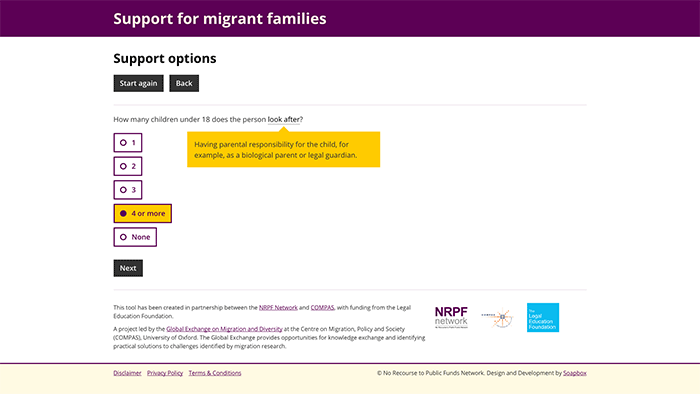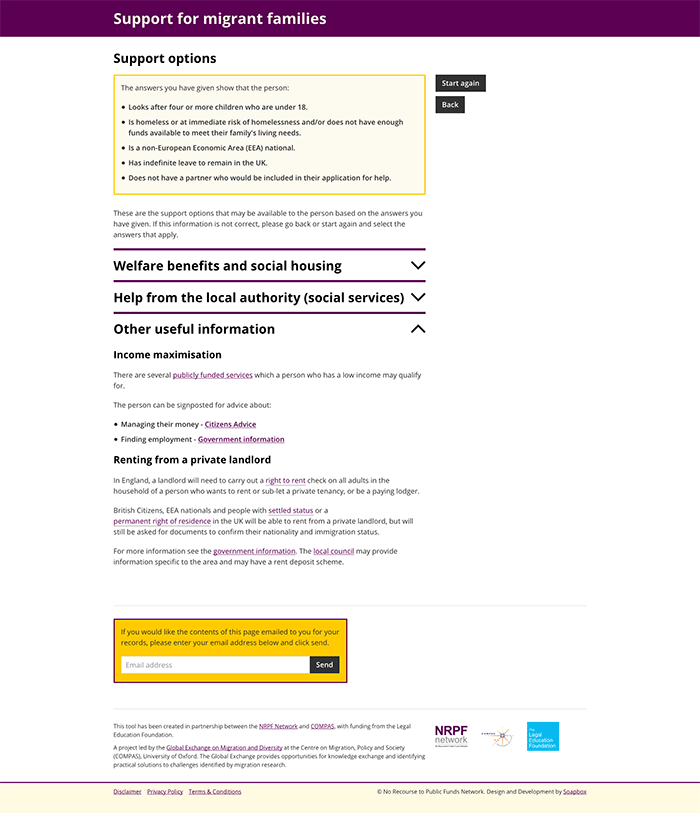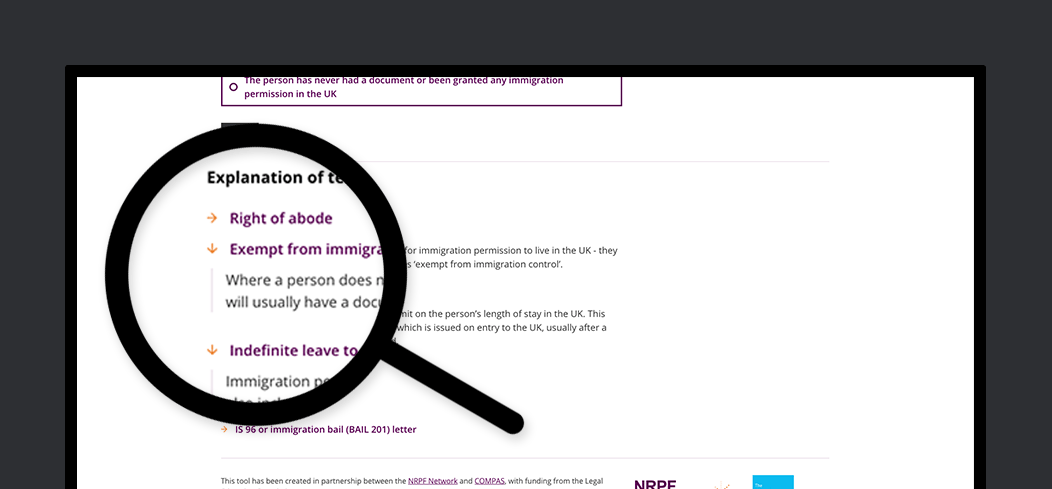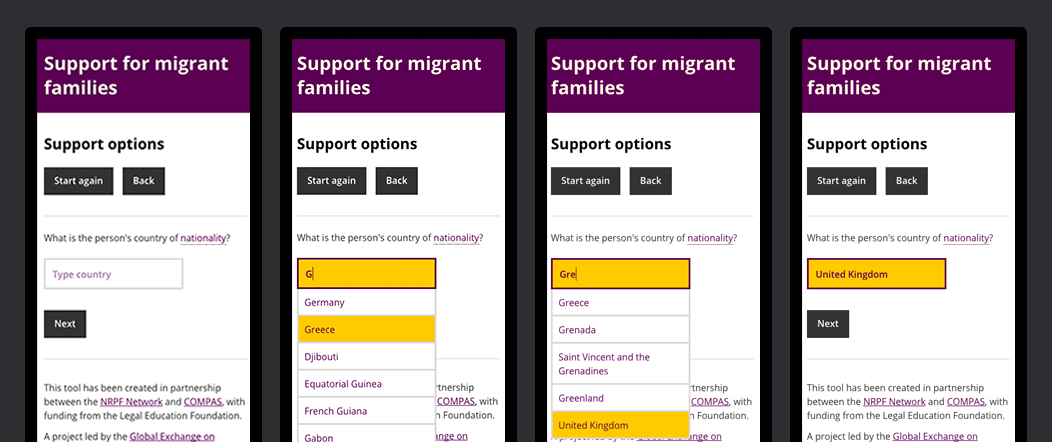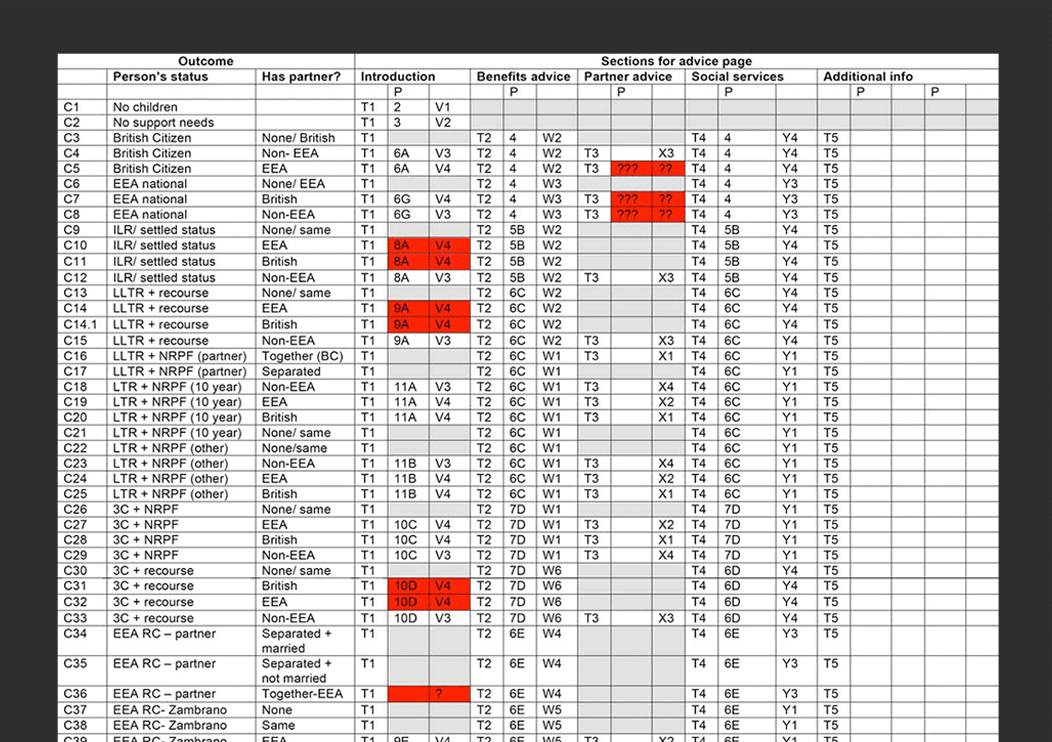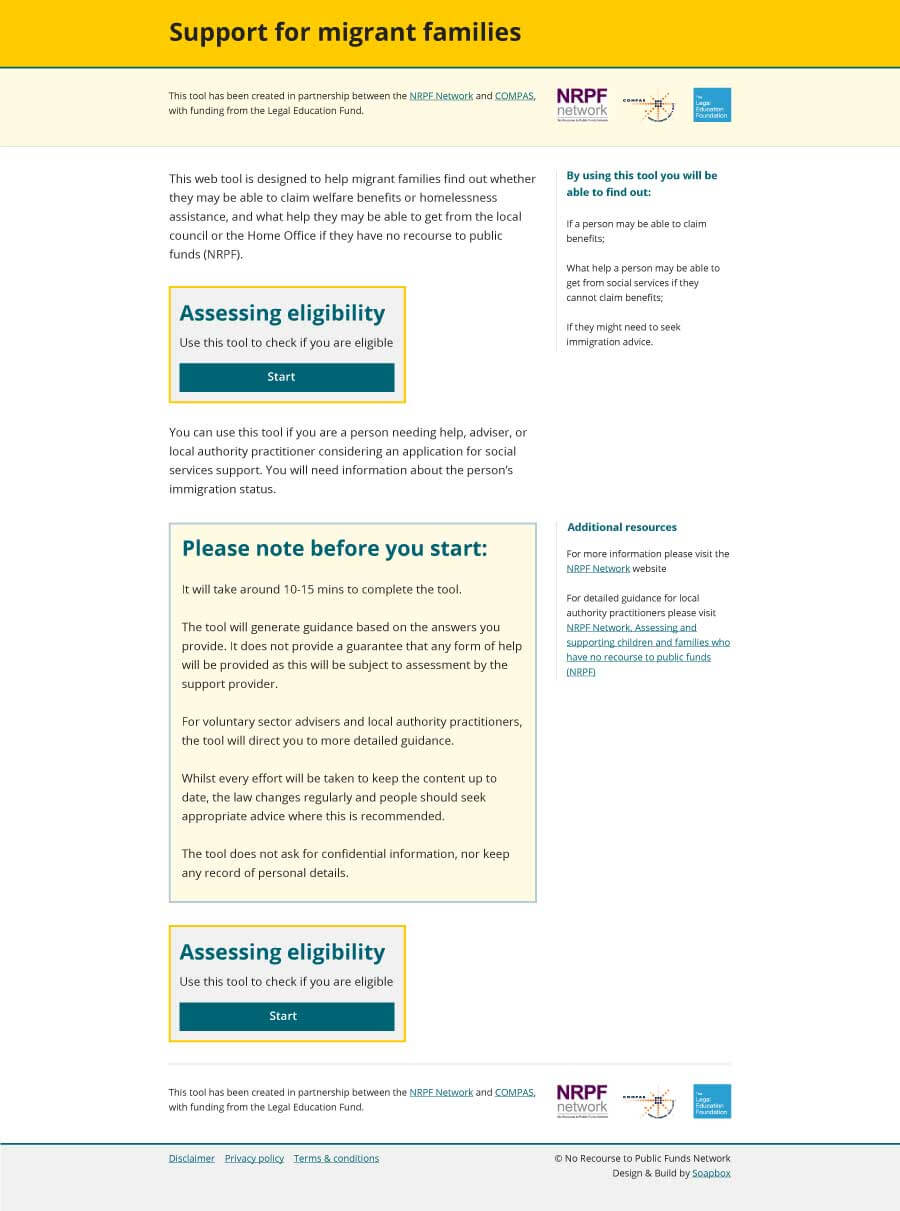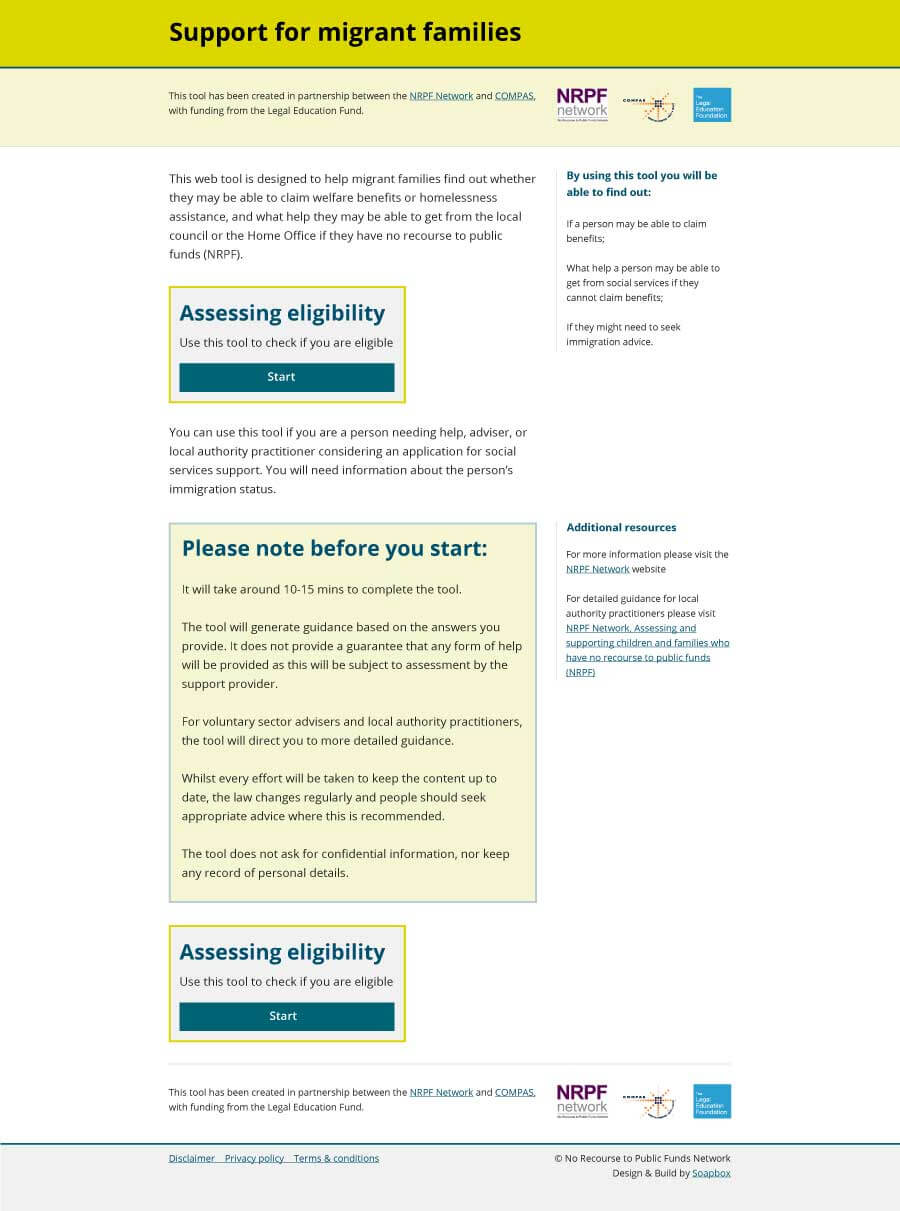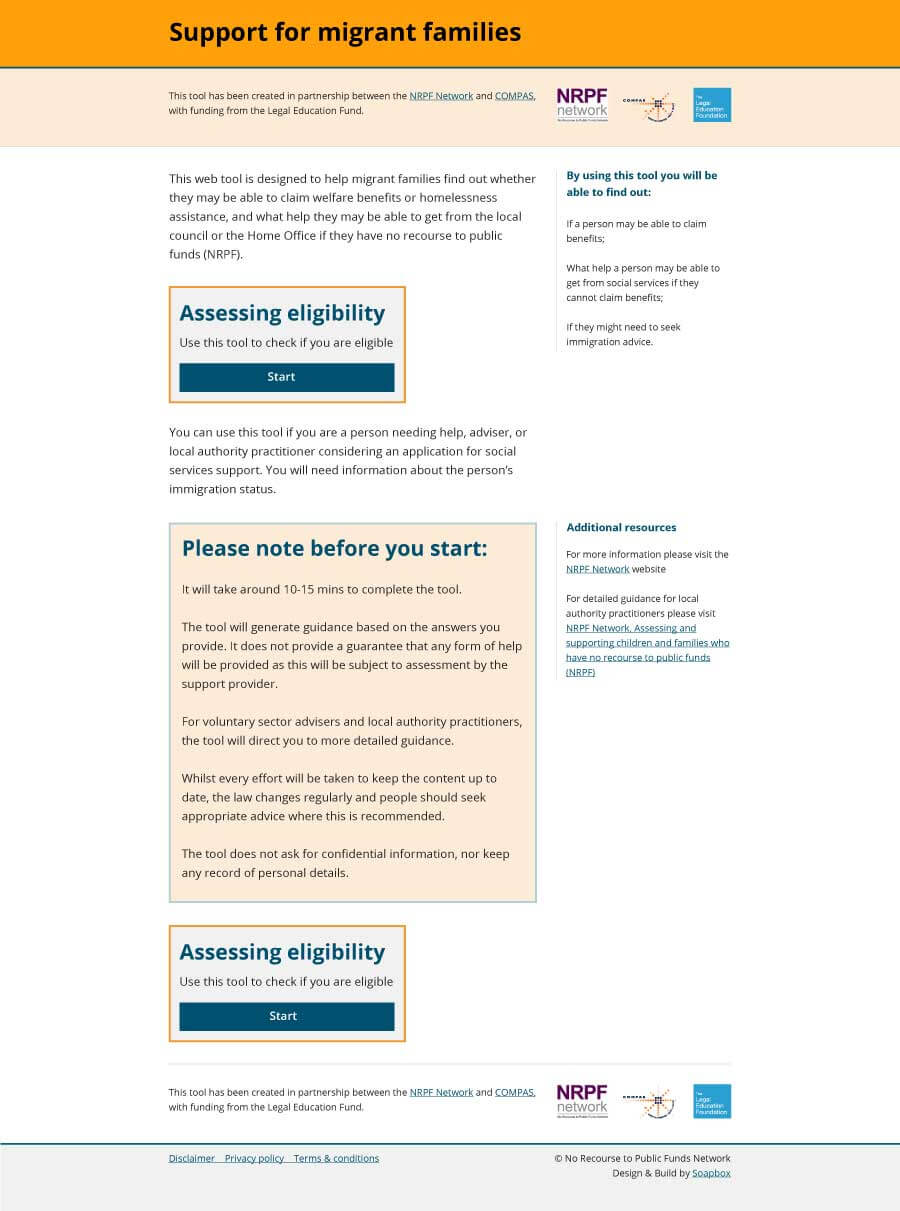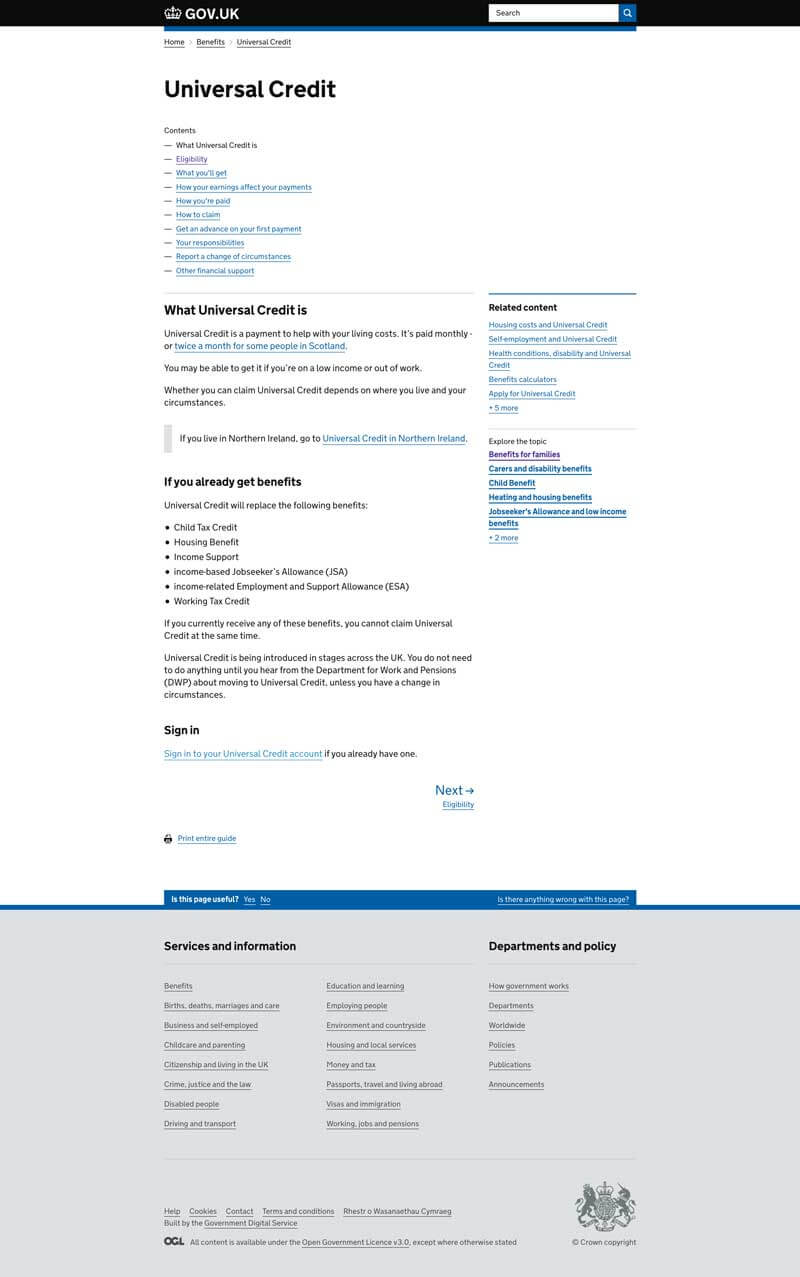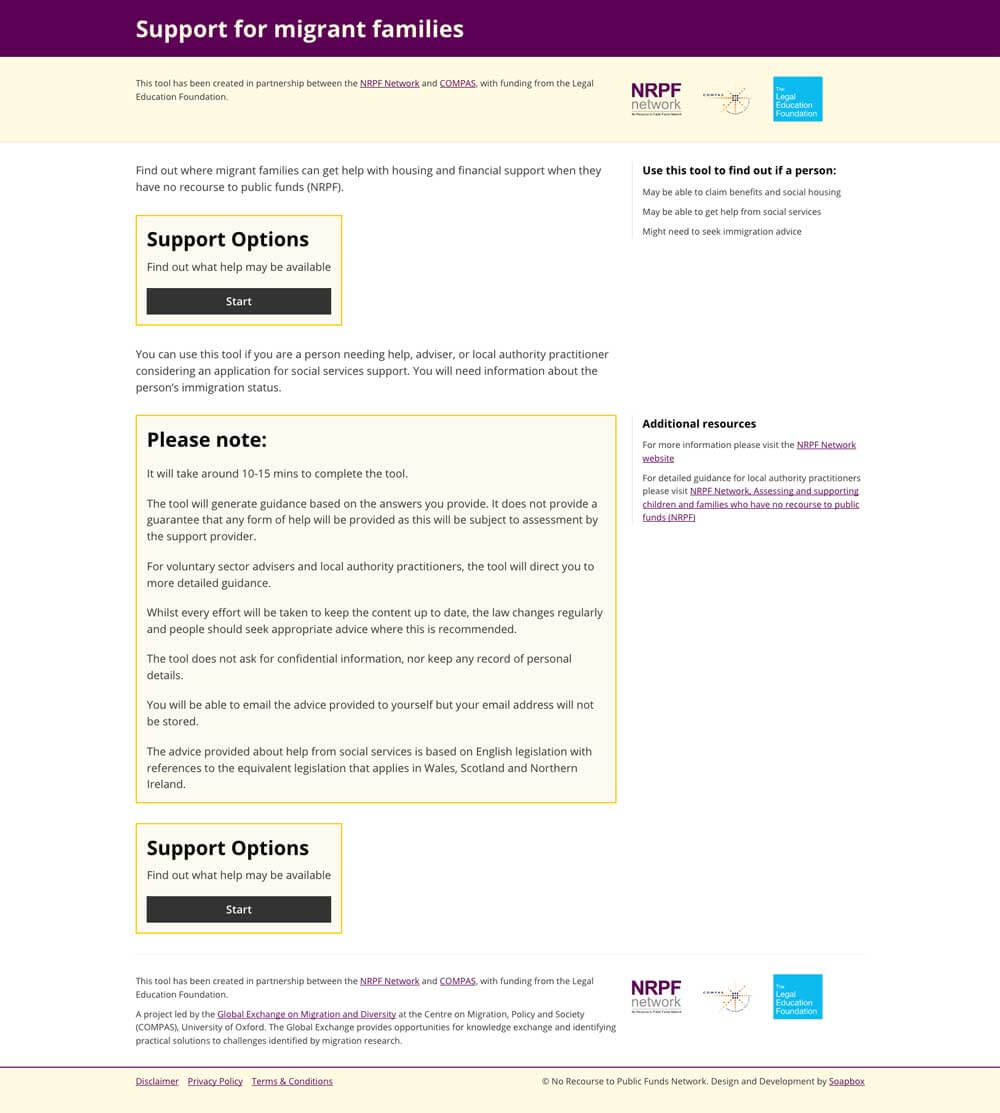Migrant Family Support Tool
The Migrant Family Support tool purpose is to show where migrant families can get help with housing and financial support when they have no recourse to public funds (NRPF).
The tool is primarily aimed at people needing help, advisers, or local authority practitioners considering an application for social services support in the United Kingdom.
It is designed as a series of multiple choice questions which at the end offer advice on whether a person can claim benefits and social housing, get help from social services, or seek more personalised immigration advice.
The tool has been awarded joint Research Champion at the 2017 Community Integration Awards for its role as a "useful and timely toolkit [that helps] to support agencies, grassroots organisations and local authorities to access accurate information about the most marginalised and vulnerable".


